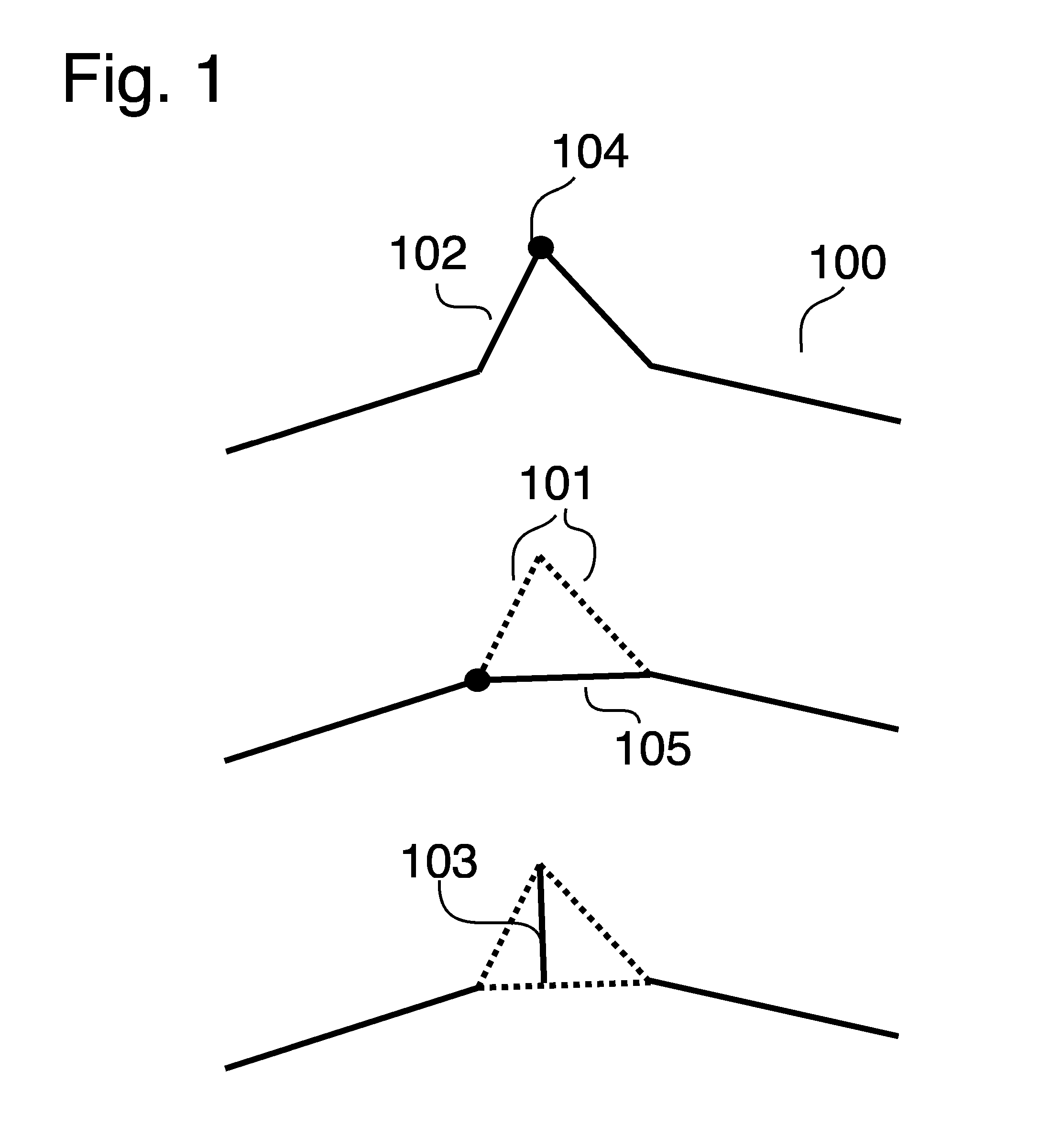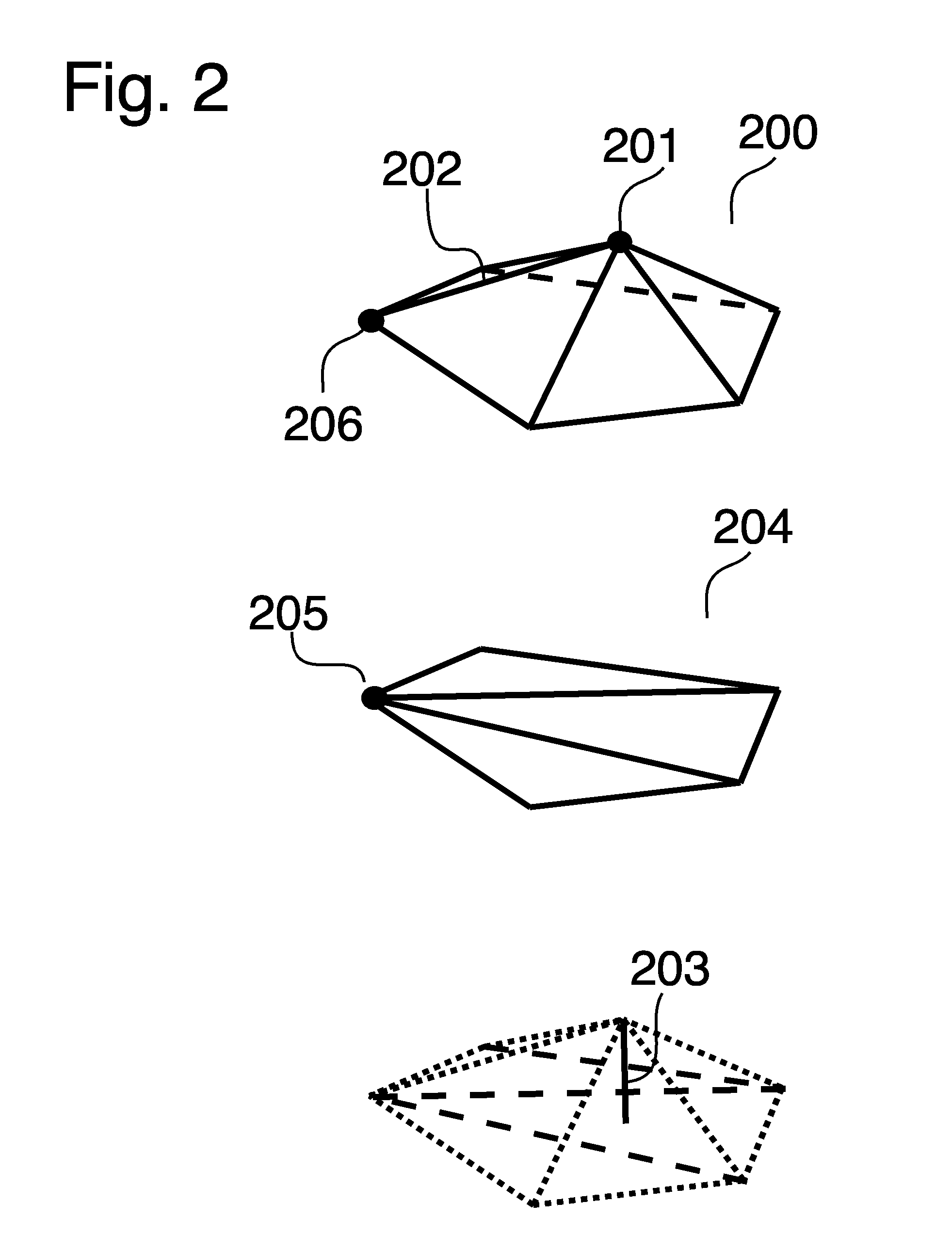Bounded simplification of geometrical computer data
a computer data and geometrical technology, applied in the field of computer graphics three-dimensional sampling, modeling and visualization using polygonal meshes, can solve the problem that none of them allows a general method for simplification of 3d
- Summary
- Abstract
- Description
- Claims
- Application Information
AI Technical Summary
Benefits of technology
Problems solved by technology
Method used
Image
Examples
Embodiment Construction
General Background
[0032]This invention discloses a method for simplifying geometrical data in higher dimensions and in particular reducing three-dimensional (3D) mesh 801 from an original 3D mesh 800. The method could also be applicable to two-dimensional 400 or higher dimensional meshes, where especially meshes in higher dimensions than three can be simplified using similar Euclidian geometrical operations to those disclosed. Furthermore the invention is disclosed by assuming that the mesh comprises triangles 200,300, however the invention is applicable to any mesh with arbitrary faces.
[0033]The simplification / reduction method comprises a series of edge-collapse operations that maps the original mesh onto the reduced mesh with each subsequent edge-collapse. The mapping allows access to exact knowledge what point on the original mesh that corresponds to a given point on the reduced mesh, and vice versa, and gives rise to a number of advantages, including the possibilities of calcula...
PUM
 Login to View More
Login to View More Abstract
Description
Claims
Application Information
 Login to View More
Login to View More - R&D
- Intellectual Property
- Life Sciences
- Materials
- Tech Scout
- Unparalleled Data Quality
- Higher Quality Content
- 60% Fewer Hallucinations
Browse by: Latest US Patents, China's latest patents, Technical Efficacy Thesaurus, Application Domain, Technology Topic, Popular Technical Reports.
© 2025 PatSnap. All rights reserved.Legal|Privacy policy|Modern Slavery Act Transparency Statement|Sitemap|About US| Contact US: help@patsnap.com



